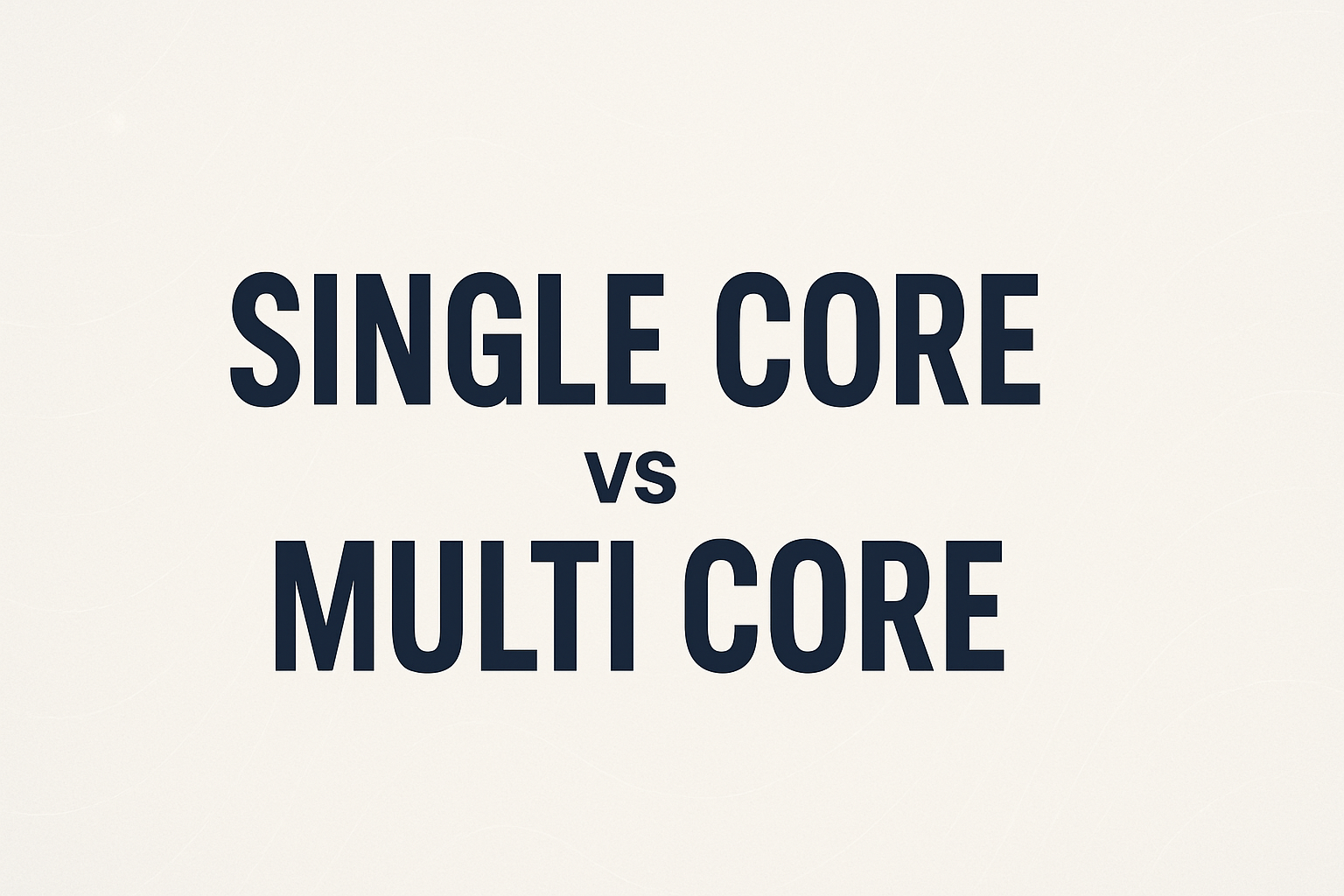Single Core Cable vs Multi-Core: What’s the Difference?
Understand the difference and choose the right cable for your electrical needs

When we have to deal with electrical systems, disregardless be it residential wiring, industrial application or even solar installations, it is important to select and apply the correct type of cable. Single Core and the Multi-Core cables are some of the popular ones where comparison is done. They have different purposes and are tailored to certain situations, however, you should understand the differences between them, as well as the benefits and purpose of use, which would allow you to make a rational decision.
We will discuss what single core and multi-core cables are, their main distinctions as well as advantages, their usage and how to select the best one based on your project in this blog.
What is a Single Core Cable?
Single core cable is made up of only one conductor (copper or aluminum) and enclosed with insulation and sometimes lengths of protective sheathing. They are also called the simple cables, and used wherever there is only a single conducting path necessary.
Structure:
- Conductor: One strand or solid wire
- Insulation: PVC, XLPE, or other materials
- Outer sheath (optional): For additional protection
Key Features:
- High current-carrying capacity
- Less flexible
- Easier to install in straight-line runs
- Low electromagnetic interference
What is a Multi-Core Cable?
Their multi-core has two or more (cores) conductors grouped within one outer sheath. Each core can convey separate signals or currents since each is insulated.
Structure:
- Multiple insulated conductors
- Common outer sheath
- May include a shielding layer for EMI protection
Key Features:
- More flexible than single-core cables
- Allows transmission of multiple signals or power lines in one cable
- Compact and organized installation
- Often used in control panels, audio/video systems, and complex wiring systems
Key Differences Between Single Core and Multi-Core Cables
| Feature | Single Core Cable | Multi-Core Cable |
|---|---|---|
| Number of Conductors | One conductor | Two or more conductors |
| Flexibility | Less flexible | Highly flexible |
| Installation | Best for short, direct paths | Ideal for compact, complex wiring |
| Maintenance | Easier to isolate and troubleshoot | May be harder to isolate individual faults |
| Space Efficiency | Requires more space for multiple runs | More compact; many wires in one sheath |
| Shielding Options | Basic shielding | Often comes with EMI/RFI shielding |
| Cost | Generally cheaper per meter | Slightly more expensive due to complexity |
| Application | High-voltage, high-current transmission | Control systems, electronics, low-power tasks |
Advantages of Single Core Cables
- Higher Current Capacity: This is because these cables have been manufactured to carry greater values of current and can be used where power is required either in industry, solar energy transmission.
- Simple Troubleshooting: Since each conductor is separate, isolating and diagnosing faults is easier.
- Better for Long Runs: Single-core cables have reduced voltage drop per distance covered due to the reduced internal paths of resistance.
- Suitable to Harsh Environments: They are better suited to use in the underground or high-temperature applications because their insulation is rugged.
Advantages of Multi-Core Cables
- Space-Saving Design: The multi core cables eliminate clutter by combining multiple wires into a single sheath.
- Easier Installation: Installation would be quicker and neater as only a single cable as opposed to multiple cables has to be run.
- Versatile Applications: The cables can be used to optimally suit control systems, audio/video systems and multiple lines signal or power driven machines.
- Improved Safety: Insulated and grouped wires lower the risk of short circuits or signal interference.
- EMI Shielding: Many multi-core cables come with built-in shielding to prevent electromagnetic interference—ideal for data and signal transmission.
Use Cases & Applications
Single Core Cable:
- Power Transmission: Used in substations and power stations
- Solar PV Systems: DC transmission between panels and inverter
- Automotive Battery Wiring
- Industrial Machinery
- Underground Cabling (with armor)
Multi-Core Cable:
- Control Panels: Connecting various switches and indicators
- Communication Systems: Audio, video, and data signals
- Medical Equipment
- Building Automation
- CCTV & Security Systems
Factors to Consider When Choosing Between the Two
- Application Type: High power or high voltage = Go with Single Core; Complex control circuits or signal systems = Choose Multi-Core
- Space and Flexibility: If cable space is a limitation or tight bends are required, multi-core offers better flexibility.
- Ease of Maintenance: Single core cables are easier to isolate and test during maintenance.
- Cost: While single core may appear cheaper, if you need multiple single-core cables for a multi-signal system, multi-core becomes more cost-effective overall.
- Safety: Multi-core cables with shielding are more immune to EMI, which is critical in sensitive applications.
Which One Should You Use?
| Situation | Recommended Cable |
|---|---|
| Long-distance, high-power transmission | Single Core |
| Compact electrical panel with multiple circuits | Multi-Core |
| Solar panel wiring (DC side) | Single Core (with XLPE insulation) |
| Security system setup | Multi-Core |
| Industrial control wiring | Multi-Core |
| Residential main supply lines | Single Core |
Conclusion
Both Single Core and Multi-Core are different in their benefits and are used oriented to the matter. Due to the fact that cables have structure, use, and specific areas to use it, learning about their use, application, and areas that they can be used, will give you a chance to find the best cable in your application. Some examples of such situations include design of a solar system, wiring a factory, or installing an automation home system, and on each of these occasions, the proper decision will assure efficiency, safety, and long life.
Prior to making any decision, it is good to consult IS/IEC cable standards, to check ampacity ratings, comply with the local electrical codes.